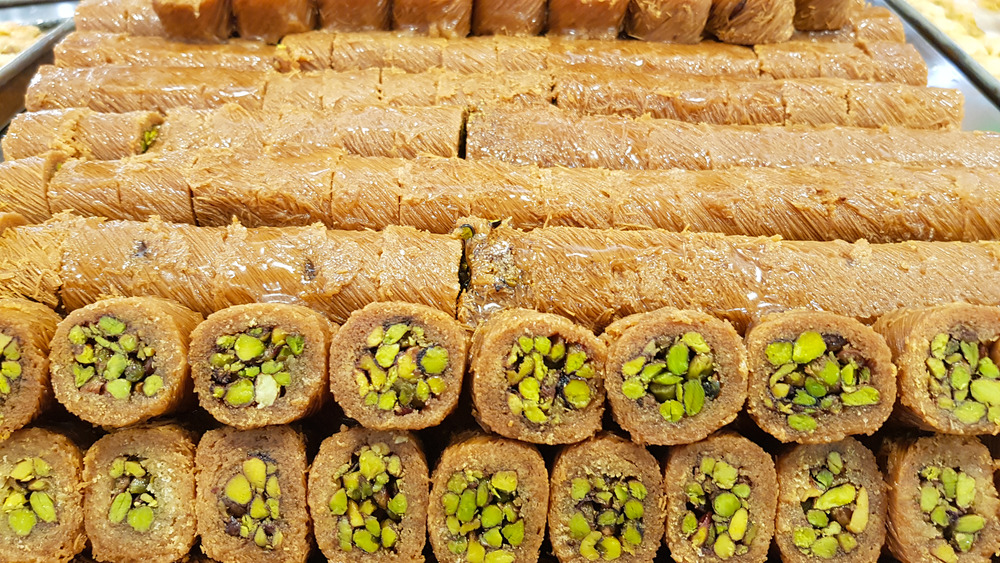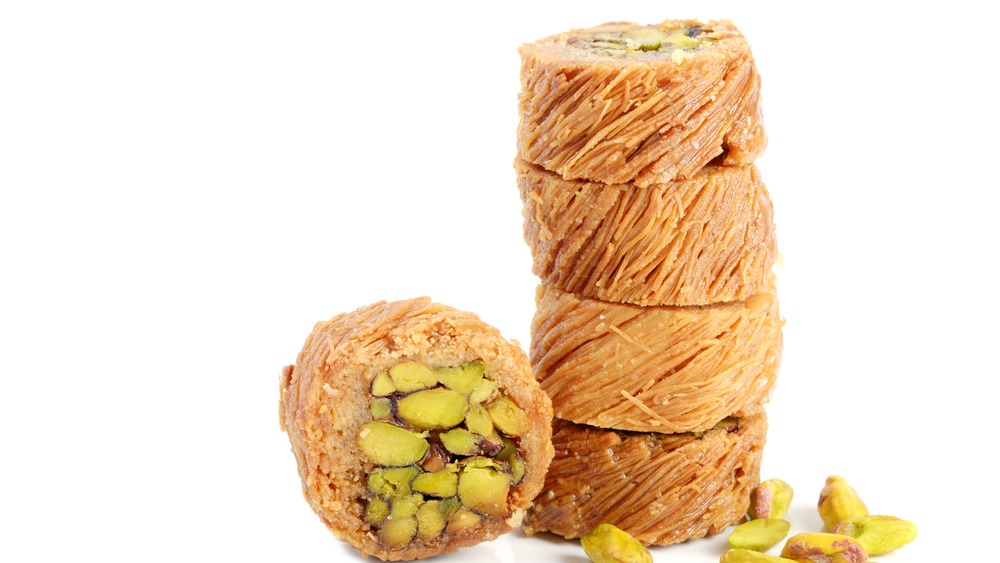What Is Bourma And How Do You Make It?
According to Food & Wine, bourma is a rich, sticky, and sweet phyllo dough-based dessert studded with nuts and redolent with butter. In some ways, it may be similar to baklava, but it truly stands alone.
Baklava is thought to have been created in Turkey during the 15th-century — or perhaps even earlier — and includes influences from Arab and Iranian cooking, according to MasterClass. Nowadays, it's enjoyed the world over, with many countries and regions adding their own special twist.
Bourma, on the other hand, is explicitly Armenian. Food & Wine defines bourma as "a phyllo-based dish filled with walnuts that is baked and then doused with sugar syrup." The most interesting component about making bourma? It calls for a thin dowel, which in many instances is actually an "heirloom often passed down in Armenian families." After brushing with nuts and melted butter, the uber-thin dough is rolled up with the dowel and then "scrunched" up, before being slid off and placed on a baking sheet.
What makes bourma so special?
The essentials of bourma are phyllo dough, butter, nuts (typically walnuts or pistachio), lemon, and sugar syrup — but of course, some special family recipes diverge from that and add other ingredients. Bourma's signature look is "crispy and scrunched" according to this recipe shared by Food & Wine, and a Saveur even calls them "accordion cookies." Their recipe also calls for cinnamon and rosewater. Additionally, it mentions a variation on bourma called glore, which is bourma "curved into a circle before baking, then filled with more nuts in the center." How delicious does that sound? While the flavors may vary slightly depending on the recipe, if you're unable to eat nuts, then bourma unfortunately may not be the dessert for you.
Crinkly, super-crunchy, and absolute delicious, bourma is irresistible. So if you're looking to give in to your sweet tooth this weekend, perhaps bourma should be your baking project.

